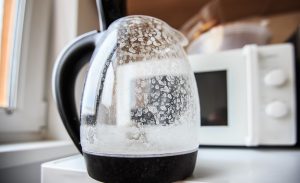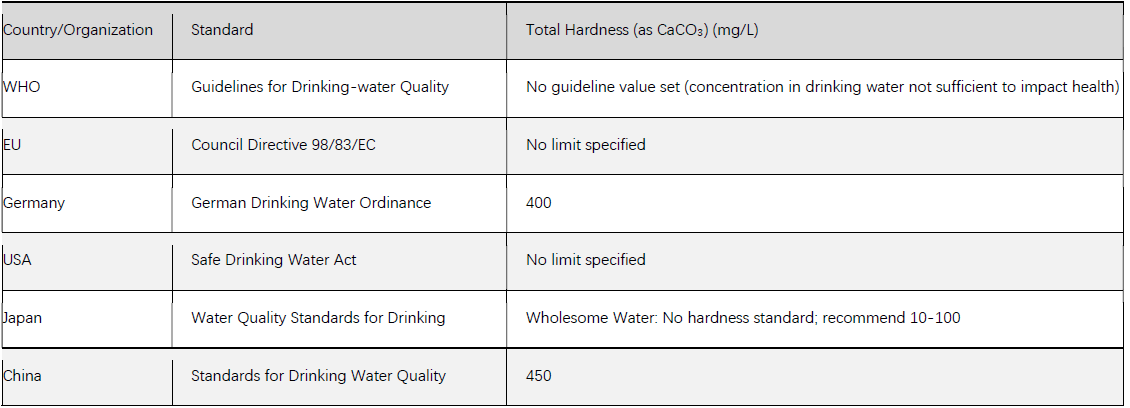What is Hard Water and How to Remove Hardness From It?
Have you ever noticed a chalky white film on your glassware, or tasted a strange mineral flavor in your tea or coffee? The culprit is likely “hard water.” While common in many regions worldwide, the debate around its effects can be confusing. Is it a health risk, or just an inconvenience?
For communities and businesses seeking to provide high-quality drinking water, moving beyond myths to understand the real impact of hardness is a critical first step.
At Globaluf, we believe in providing clear, factual information to empower our clients. This comprehensive guide will explain what hard water is, the global perspective on its regulation, its true impact on your quality of life and health, and the most effective technologies to treat it: water softeners and reverse osmosis systems.

Hard water not only ruins the taste of coffee and tea but also builds up insulating scale on heating elements, wasting energy and shortening appliance life.
What is Hard Water?
Simply put, hard water is water that has a high concentration of dissolved minerals, predominantly calcium (Ca²⁺) and magnesium (Mg²⁺). As groundwater flows through soil and rock, it picks up these mineral salts.
Temporary vs. Permanent Hardness
Not all hardness is the same. It’s important to know the difference:
- Temporary Hardness: Caused by bicarbonates, which can precipitate as limescale when boiled.
- Permanent Hardness: Caused by sulfates and chlorides, which cannot be removed by boiling. Most water sources contain a combination of both.
The Real Impact of Hard Water: Quality of Life and Health Considerations
The primary issues with hard water relate to technical problems and aesthetics. However, a common health question deserves a careful look: the potential link to kidney stones.
The Official Stance: A Technical Issue
First, it’s important to understand the global regulatory view. The World Health Organization (WHO), in its Guidelines for Drinking-water Quality, does not set a health-based limit for hardness. Most national standards are based on technical factors like preventing pipe corrosion or managing scale in distribution systems.

The Health Debate: The Link to Kidney Stones
While hard water is generally considered safe for the public, there is ongoing scientific discussion regarding its role in the formation of kidney stones, particularly for susceptible individuals.
- The Concern: Kidney stones are hard deposits made of minerals and salts that form inside the kidneys. The most common type is the calcium oxalate stone. Since hard water is defined by its high calcium content, concerns have been raised about whether its long-term consumption could contribute to a higher risk of stone formation.
- What the Research Says: The scientific evidence is not conclusive and can seem contradictory. Some studies have suggested a potential correlation between living in very hard water areas and a higher incidence of kidney stones. However, other factors like diet, genetics, and overall fluid intake play a much more significant role. For this reason, major health organizations have not established a direct causal link for the general population.
Despite the lack of a definitive link, for individuals with a history of kidney stones or those advised by their doctor to monitor calcium intake, managing the mineral content of their drinking water can be a proactive measure.
The Proven Impact on Quality of Life
Beyond the health debate, the negative effects of hard water on daily life and industrial processes are undeniable:
- Causes Damaging Scale Buildup: This is the most costly problem. Hardness creates limescale that clogs pipes, coats heating elements in water heaters and boilers, and damages appliances. This buildup acts as an insulator, forcing equipment to use more energy and leading to premature failure.
- Affects Taste and Cooking: The high mineral content gives water a noticeably bitter or “earthy” taste. This directly alters the flavor of coffee, tea, soups, and other beverages and foods. As the Japanese “Comfort Target” of 10-100 mg/L suggests, water with lower hardness simply tastes better.
Conclusion: While the scientific community has not labeled hard water a direct health risk for the general population, the concerns around kidney stones for susceptible individuals are valid. More importantly, the negative impact of hard water on your property and quality of life is proven. Treating hardness is a smart investment in protecting your infrastructure and enhancing your daily experience with water.
How to Remove Hardness: Professional Solutions
Solution 1: Water Softeners (Ion Exchange)
A water softener is designed specifically to remove hardness minerals.
- How it Works: It uses a process called ion exchange to swap calcium and magnesium ions for sodium ions, effectively eliminating the minerals that cause scale.
- Best For: Whole-house or facility-wide protection of pipes and appliances from scale.

Solution 2: Reverse Osmosis (RO) Systems
For the highest level of purity, removing not just hardness but a vast range of other contaminants, Reverse Osmosis is the superior technology.
- How it Works: RO uses a fine membrane to physically block and remove calcium, magnesium, salts, heavy metals, and other impurities, delivering exceptionally pure water.
- Best For: Producing premium-quality drinking water, especially for those concerned about mineral intake or seeking the best possible taste. It is the definitive solution for meeting the most stringent purity standards.

Partner with Globaluf for Pure Water
Whether your priority is protecting your home from scale, addressing health concerns, or simply enjoying the best-tasting water possible, Globaluf has the solution. We design and manufacture custom water treatment plants for any application.
Contact our water specialists today to discuss your water challenges and get a personalized recommendation.
Request a Quote
Fill out the form below to discuss your water treatment needs. Our experts will get back to you within 24 hours.
You may also be interested in:

How to Purify Borehole Water for Drinking

The Hidden Threat: Your Expert Guide to Preventing RO Membrane Biofouling

The Silent Killer of RO Systems: A Complete Guide to Preventing Membrane Oxidation

How to Desalinate Sea Water: The Ultimate Guide to SWRO Technology

Understanding RO Membrane Scaling: Causes, Effects, and Prevention Strategies

Beyond the Basics: Advanced Reverse Osmosis System Design by Globaluf

Navigating Water Quality Fluctuations: Globaluf's Expertise in Safeguarding Membrane System Performance

Comprehensive Guide to EDI System Maintenance: Effective Cleaning Techniques and Prevention Strategies

Key Parameters at RO Feed Water – The First Line of Defense in RO Desalination

